Washington, D.C., the monumental capital of the United States, is a city steeped in history, democratic ideals, and architectural grandeur. This detailed historical exploration delves into the remarkable journey of how the city was constructed, examining the visionaries, architects, and the inspirations that shaped its iconic landmarks over the years.
The Birth of a Capital: Inception and Early Visions
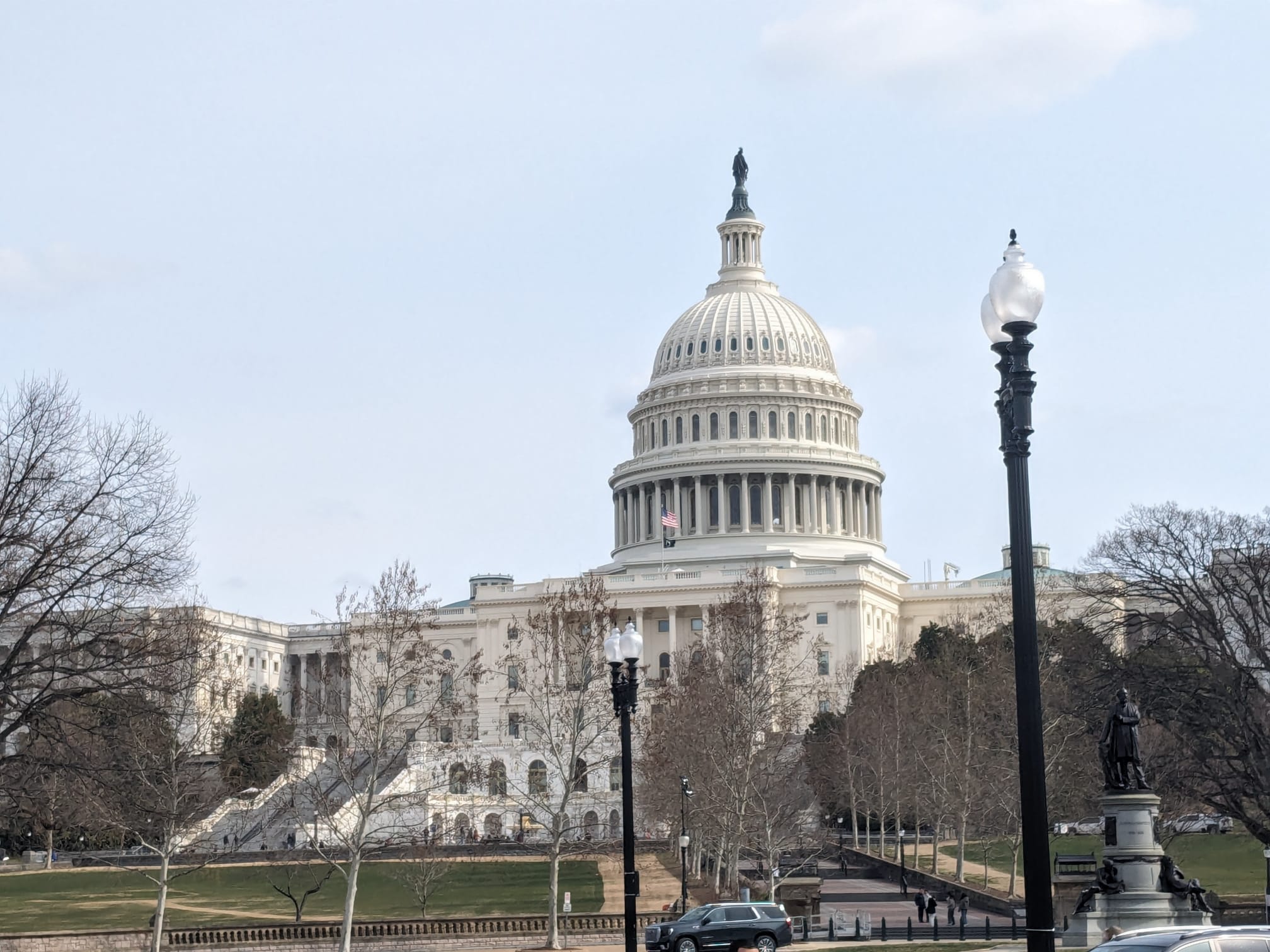
In the crucible of the late 18th century, as the United States emerged from the crucible of revolution and charted a course towards nationhood, the Founding Fathers envisioned more than just a new government. They dreamed of a purpose-built capital that would serve as a beacon of the nation’s ideals, a symbolic seat of government that would stand testament to the democratic principles upon which the fledgling republic was founded.
Recognizing the need for a distinct and symbolic location, the Founding Fathers embarked on a quest to select a site that would not only be strategically situated but also carry profound symbolism. The banks of the Potomac River, between Maryland and Virginia, were chosen as the canvas upon which this monumental vision would be realized. This decision was not merely practical; it was laden with symbolic importance, mirroring the desire for a capital that would bridge regional divides and embody the unity of the newly formed nation.
The realization of this grand vision required a design that would capture the essence of American ideals while harmonizing with the natural surroundings. In 1792, a design competition was launched, attracting the attention of architects and visionaries eager to contribute to the nation’s symbolic capital. Amidst the submissions, Dr. William Thornton’s design emerged victorious, chosen for its blend of neoclassical elegance and practical functionality.
Thornton’s winning design laid the foundation for the ambitious project that would transform a stretch of land into the enduring city of Washington, D.C. His vision was not confined to bricks and mortar; it embodied a holistic approach that considered the aesthetics, functionality, and symbolism of the capital. The layout of avenues and public spaces, conceived with meticulous attention, reflected an aspiration for a city that would not only house the government but also serve as a manifestation of democratic principles.
The Founding Fathers, guided by their commitment to creating a capital that would stand the test of time, set the wheels in motion for the birth of Washington, D.C. This period of inception and early visions laid the groundwork for a city that would become a living testament to the ideals of democracy, resilience, and unity – a capital that transcended its physical boundaries to become an enduring symbol of the American spirit.
Laying the Foundations for Washington D.C.: Construction Commences
In n the pivotal year of 1793, the nascent United States witnessed a symbolic moment that would reverberate through the annals of history. President George Washington, himself a visionary leader and a symbol of the nation’s founding ideals, presided over the laying of the cornerstone for the U.S. Capitol. This momentous occasion marked the tangible birth of the new nation’s capital, a physical manifestation of the democratic experiment’s aspirations.
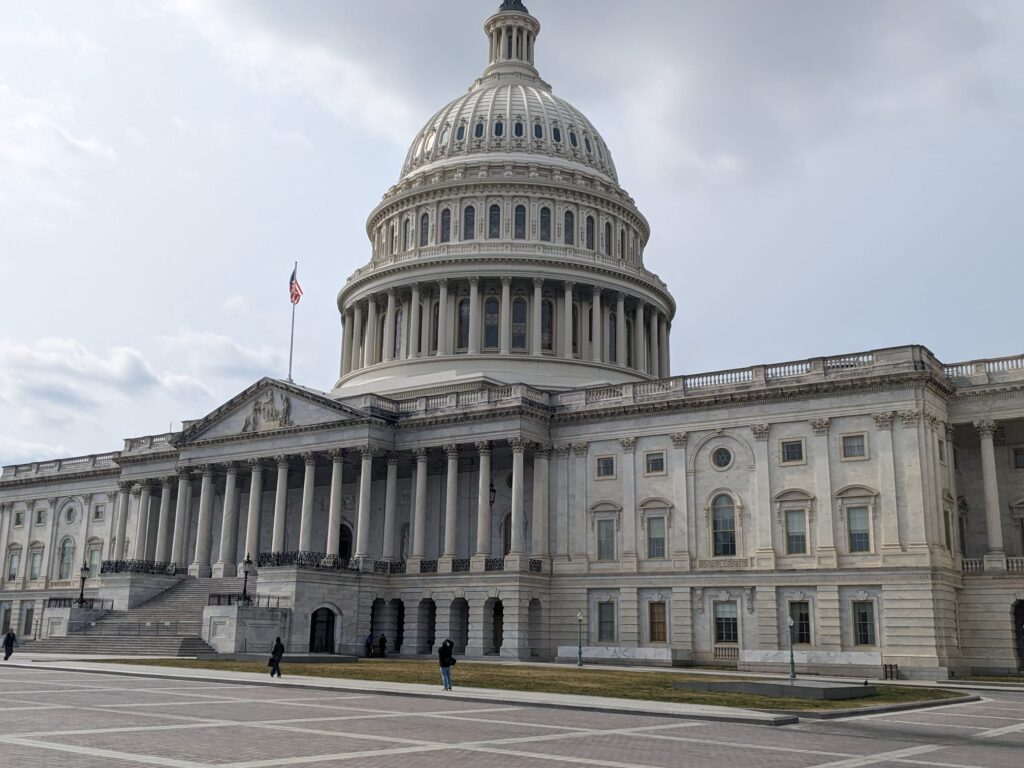
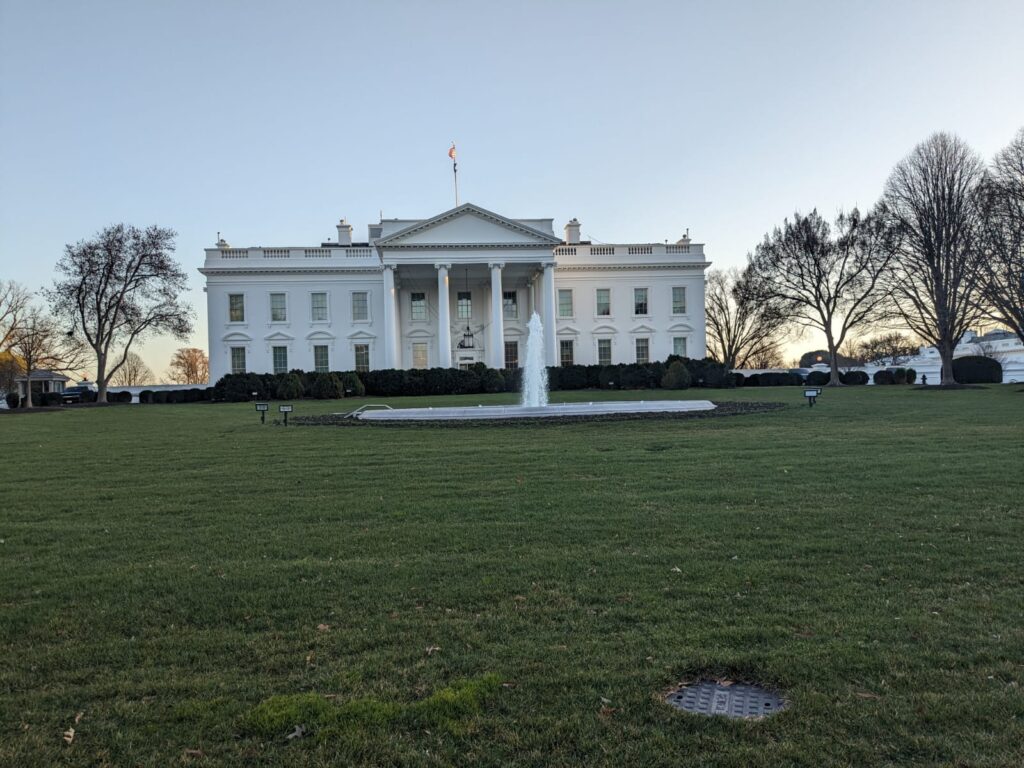
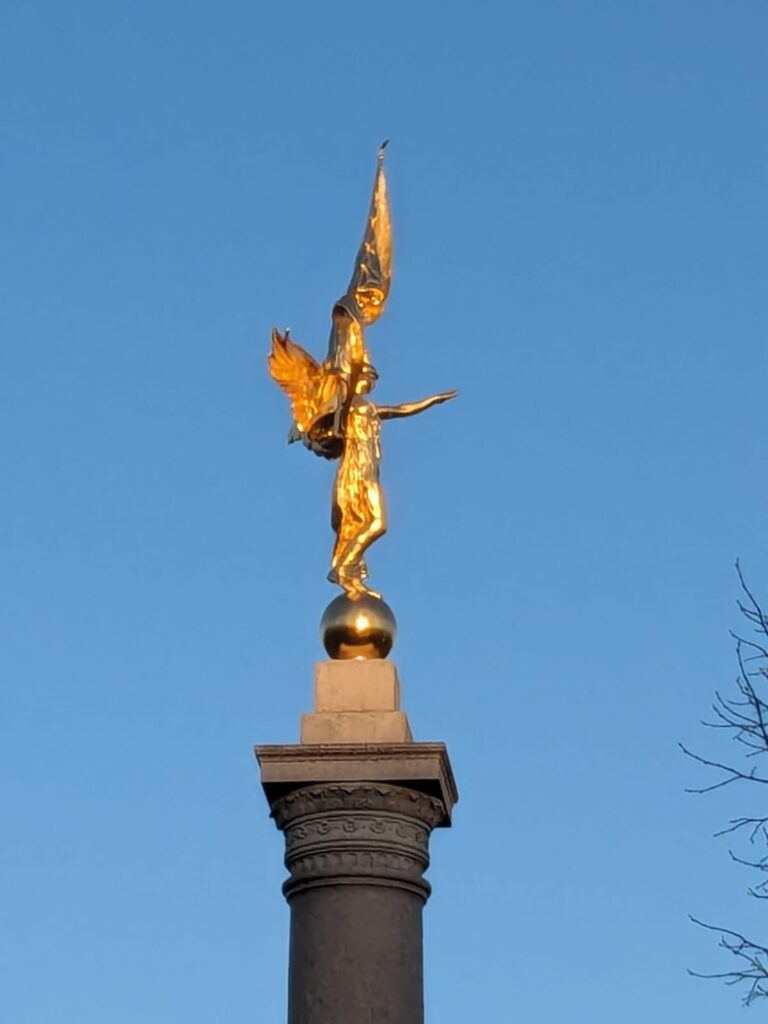
However, the journey from cornerstone to completion was not without its formidable challenges. The early years of construction faced financial constraints and labor disputes, testing the resolve of those dedicated to the realization of this purposeful city. In the face of adversity, the unwavering vision of creating a capital that transcended the ordinary prevailed, fostering a collective determination to overcome the hurdles that lay in the path of progress.
To bring the U.S. Capitol to fruition, a cadre of architectural luminaries lent their expertise and creativity to the evolving design. Among these visionaries were Benjamin Latrobe and Charles Bulfinch, whose contributions left an indelible mark on the Capitol’s aesthetic evolution. Guided by the prevailing Neoclassical aesthetics of the time, Latrobe and Bulfinch seamlessly blended architectural elegance with practical functionality, ensuring that the Capitol would stand not just as a symbol of governance but as a work of enduring beauty.
The Capitol’s construction became a collaborative endeavor, a convergence of architectural ingenuity and the labor of countless hands toiling on the foundation of a city destined to become the epicenter of American democracy. The evolving design and construction efforts symbolized not only the physical growth of the capital but also the maturation of the democratic experiment it was designed to house.
As the cornerstone ceremony faded into the echoes of history, the Capitol emerged as a tangible testament to the resilience, tenacity, and unyielding spirit of a nation committed to the ideals of self-governance. The early years of construction laid the foundations for a city that would evolve into the beating heart of the United States, embodying the very principles upon which the nation was founded.
Architectural Evolution: From Neoclassical Ambitions to the Dome’s Grandeur
The architectural evolution of Washington, D.C., unfolds as a captivating narrative, mirroring the dynamic tapestry of the changing American identity. Dr. William Thornton’s initial Neoclassical design, conceived with a vision to embody the classical ideals of democracy, laid the foundational aesthetic for the nation’s capital. However, it was in the hands of subsequent architects, notably Thomas U. Walter and August Schoenborn, that the city’s architectural identity underwent transformative modifications, leading to the emergence of the iconic dome as the crowning glory of Washington, D.C.
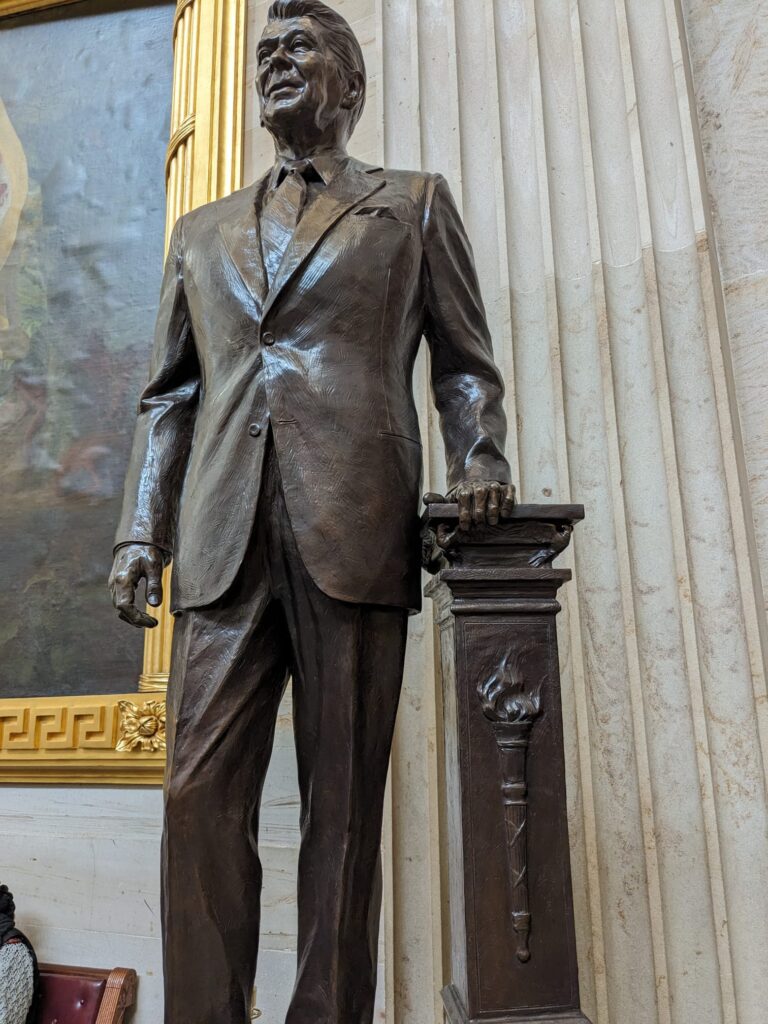
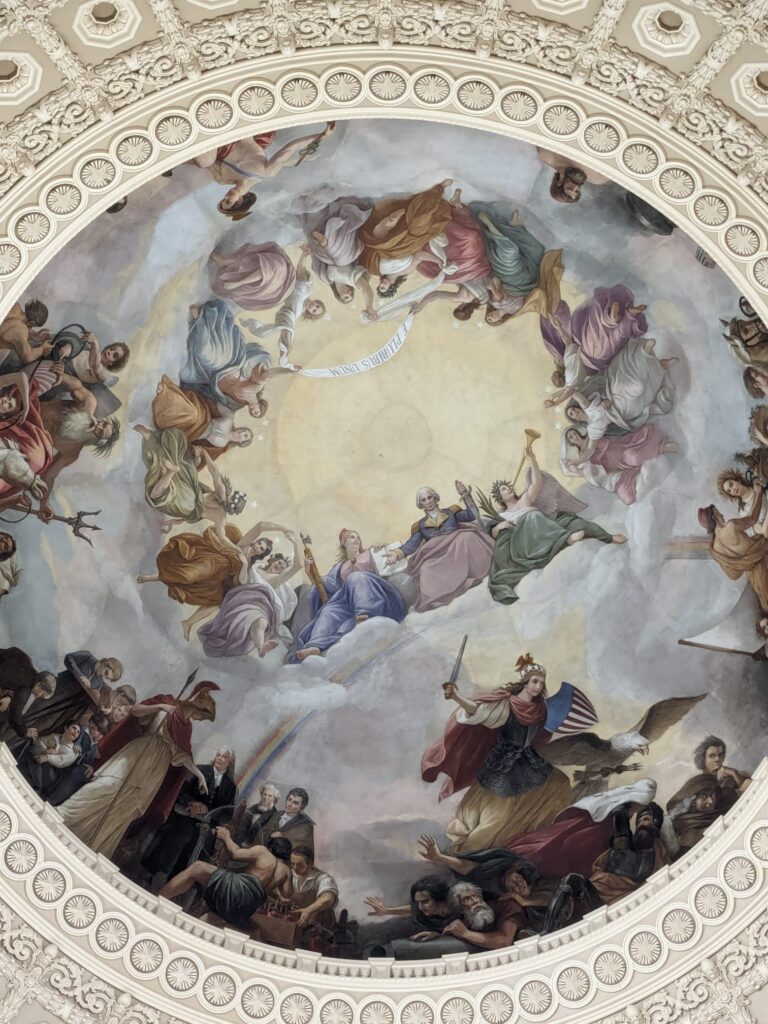
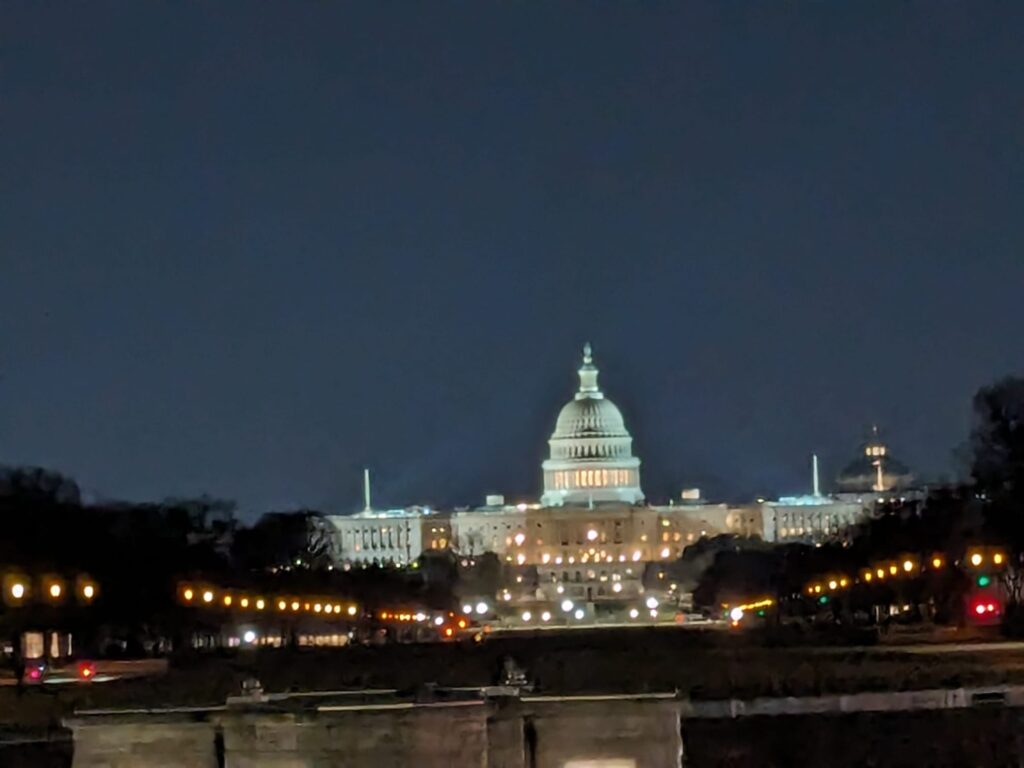
Thornton’s Neoclassical design, inspired by the architectural styles of ancient Greece and Rome, set the stage for a city that would visually embody the democratic principles championed by the Founding Fathers. The initial layout of the city, with wide avenues and grand public spaces, reflected a commitment to creating a capital that would transcend the utilitarian and serve as a living testament to the ideals of the fledgling republic.
As the cityscape began to take shape, subsequent architects brought their unique visions to the forefront. Thomas U. Walter, appointed as the Capitol’s principal architect in the mid-19th century, introduced significant modifications that further defined the evolving aesthetic. Walter’s additions included the impressive wings flanking the Capitol, enhancing its visual prominence and accommodating the expanding needs of the legislative branch.
However, it was the collaboration between Walter and August Schoenborn that marked a transformative moment in Washington’s architectural journey. The decision to introduce the iconic dome, with its neoclassical influences and symbolic significance, elevated the Capitol from a mere legislative building to a majestic emblem of American democracy. The dome became a symbol of unity, resilience, and the enduring spirit of the nation.
The construction of the dome, completed during the American Civil War, served as a poignant metaphor for the nation’s ability to endure and persevere even in the face of its most profound challenges. The gleaming structure, towering above the city, became a visual testament to the ideals that Washington, D.C., represented – a beacon of democracy, unity, and the enduring pursuit of a more perfect union.
The architectural evolution of Washington, D.C., stands as a testament to the nation’s capacity for growth, adaptation, and self-reflection. From the Neoclassical ambitions of its foundational design to the grandeur of the iconic dome, the city’s architectural journey encapsulates the essence of American identity, reflecting a commitment to democratic ideals and the ever-evolving spirit of a nation.
The National Mall: A Panorama of Democracy
The National Mall, an expansive green canvas situated at the heart of Washington, D.C., stands as a testament to the city’s commitment to democratic expression and collective identity. Conceived as an open space where the ideals of democracy could be tangibly felt, the construction of the National Mall expanded the symbolic landscape of the city, creating a sweeping expanse that connects the Capitol to the Potomac River.
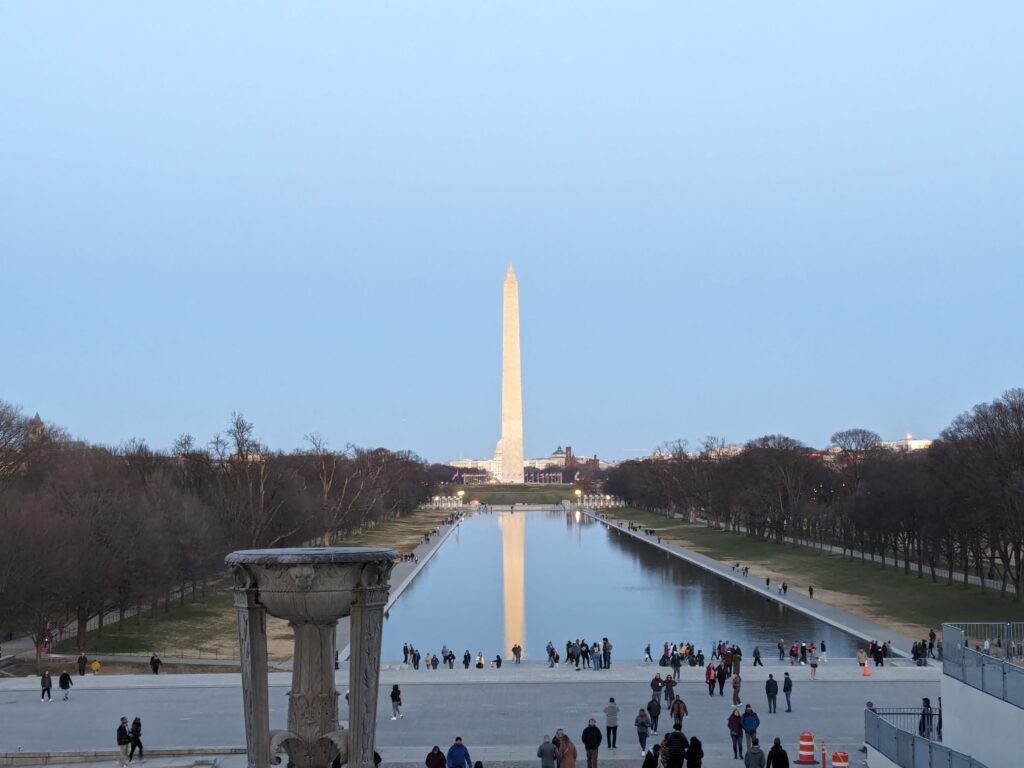
Designed as a deliberate space for public gatherings, civic engagement, and the celebration of national milestones, the National Mall became a vibrant panorama of democracy. Its meticulously planned layout, flanked by iconic monuments and memorials, transforms the Mall into a living, breathing testament to the principles upon which the United States was founded.
The Washington Monument, an iconic obelisk towering over the Mall, serves as a visual anchor and a symbol of national unity. Its construction, begun in 1848 and completed in 1884, predates the dedication of the National Mall but aligns seamlessly with its purpose. The monument stands as a testament to the nation’s first president, George Washington, and symbolizes the enduring pursuit of liberty.
On the western end of the Mall, the Lincoln Memorial emerges as a majestic tribute to the 16th President of the United States. Henry Bacon’s design, completed in 1922, not only captures the classical grandeur of Greek architecture but also provides a reflective space for visitors to contemplate the ideals of freedom and equality that Abraham Lincoln championed. The Reflecting Pool, stretching between the Washington Monument and the Lincoln Memorial, adds a serene touch, creating a visual link that enhances the grandeur of the Mall.
The National Mall serves as a dynamic bridge, both visually and symbolically, connecting the branches of government represented by the Capitol with the people and the broader American landscape. The tree-lined avenues, open spaces, and carefully curated monuments encourage a sense of shared heritage and collective ownership of the democratic ideals embodied by the capital city.
As a venue for historic gatherings, from Martin Luther King Jr.’s iconic “I Have a Dream” speech to presidential inaugurations and celebratory events, the National Mall echoes with the footsteps of those who have shaped the nation’s history. It becomes a stage for democratic expression, a canvas upon which the American people inscribe their aspirations, struggles, and triumphs.
In essence, the National Mall is not just a physical space; it is a living panorama of democracy, an embodiment of the collective dreams and ideals that define the United States. Its construction and evolution stand as a testament to the city’s commitment to fostering an environment where the spirit of democracy is not only celebrated but actively nurtured, ensuring that the National Mall remains a cherished symbol of unity, freedom, and the enduring pursuit of a more perfect union.
The Washington Monument: A Towering Symbol
The creation of the Washington Monument stands as a testament to the enduring legacy of the United States’ first president, George Washington. Designed by architect Robert Mills and later completed through the collaborative efforts of Thomas Casey and the U.S. Army Corps of Engineers, this towering structure serves as an iconic tribute to the visionary leader who played a pivotal role in the nation’s founding.
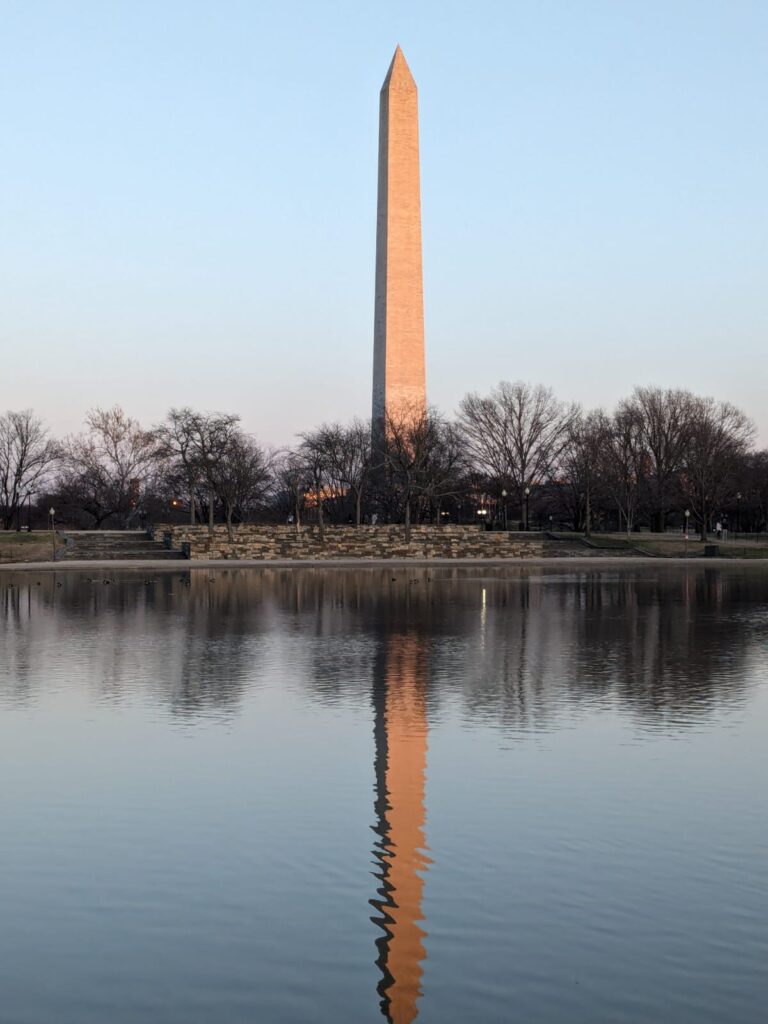
Inspired by the timeless elegance of Egyptian obelisks, the Washington Monument rises majestically above the landscape, commanding attention and embodying the grandeur of America’s founding ideals. The monument’s design reflects not only the architectural ingenuity of its creators but also a profound reverence for the principles of liberty, unity, and democratic governance championed by George Washington.
The construction of the monument commenced in the mid-19th century, with the original plans calling for a monument that would soar to unprecedented heights. However, due to financial constraints and the outbreak of the Civil War, progress was halted, and the monument stood unfinished for several years. It was only through the dedicated efforts of the Washington National Monument Society, private donors, and a renewed commitment to national unity that construction resumed and saw completion in 1884.
Standing at an impressive height of 555 feet and 5 1/8 inches, the Washington Monument is not merely a physical structure but a towering symbol of the nation’s resilience and commitment to the principles espoused by its first president. The choice of an obelisk, a traditional Egyptian architectural form symbolizing stability and grandeur, adds an element of timeless significance to the monument.
The monument’s location on the National Mall, at the western end of the Reflecting Pool and in direct line with the U.S. Capitol, creates a visual axis that unites the seat of government with the towering tribute to Washington. This intentional alignment reinforces the symbolic connection between the founding principles represented by the Capitol and the enduring legacy embodied by the Washington Monument.
As visitors ascend the monument’s interior, a journey of 897 steps or a swift elevator ride, they are rewarded with panoramic views of the city, offering a perspective that transcends time. From this elevated vantage point, one can appreciate the city’s architectural symmetry, the carefully planned layout of the National Mall, and the spirit of democracy that permeates the landscape.
The Washington Monument, with its dignified presence and soaring silhouette against the sky, remains an ever-present reminder of the nation’s foundational principles. It stands as a towering symbol, an architectural marvel that pays homage to George Washington’s indelible contributions and serves as an enduring beacon, guiding the nation towards the ideals of unity, freedom, and the perpetual pursuit of a more perfect union.
Reflecting Democracy: The Lincoln Memorial in Washington D.C.
The completion of the Lincoln Memorial in 1922 stands as a monumental tribute to the 16th President of the United States, Abraham Lincoln. Crafted under the visionary design of architect Henry Bacon, this grand structure unfolds as a timeless homage to a leader who played a pivotal role in shaping the nation during one of its most challenging periods.
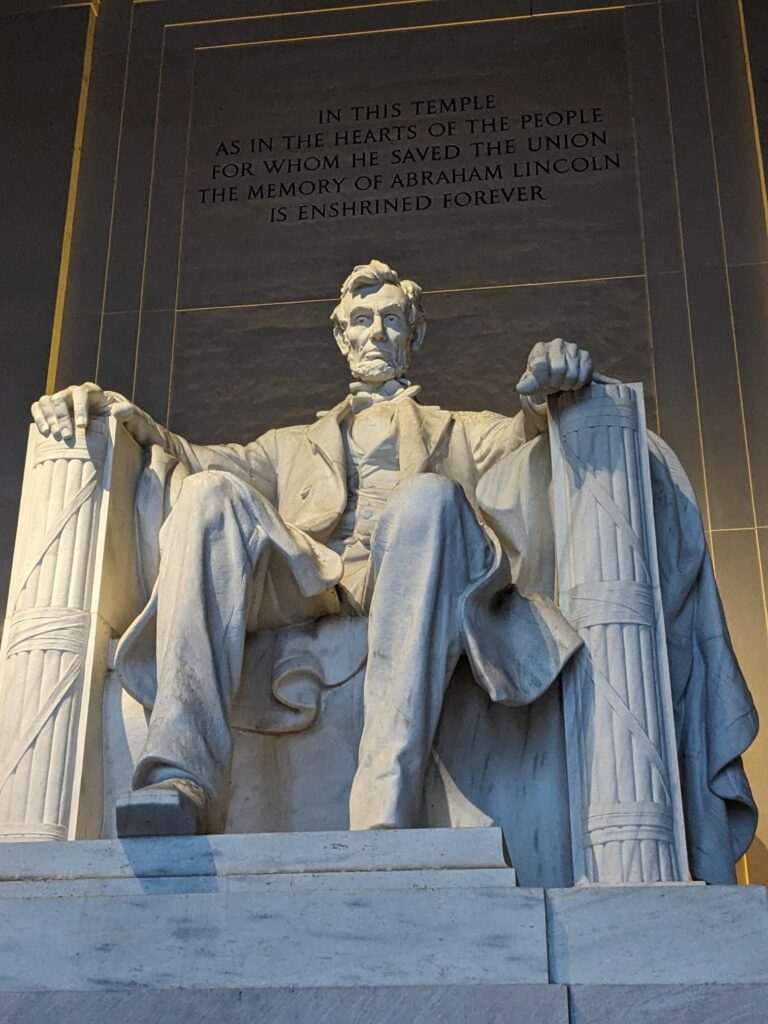
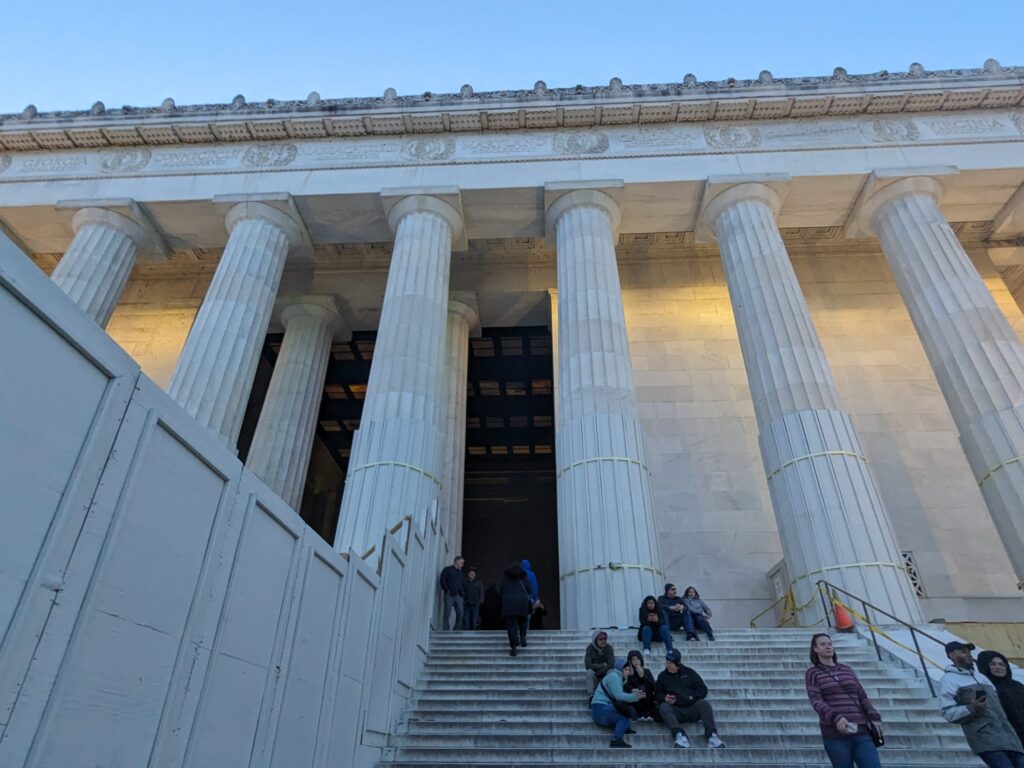
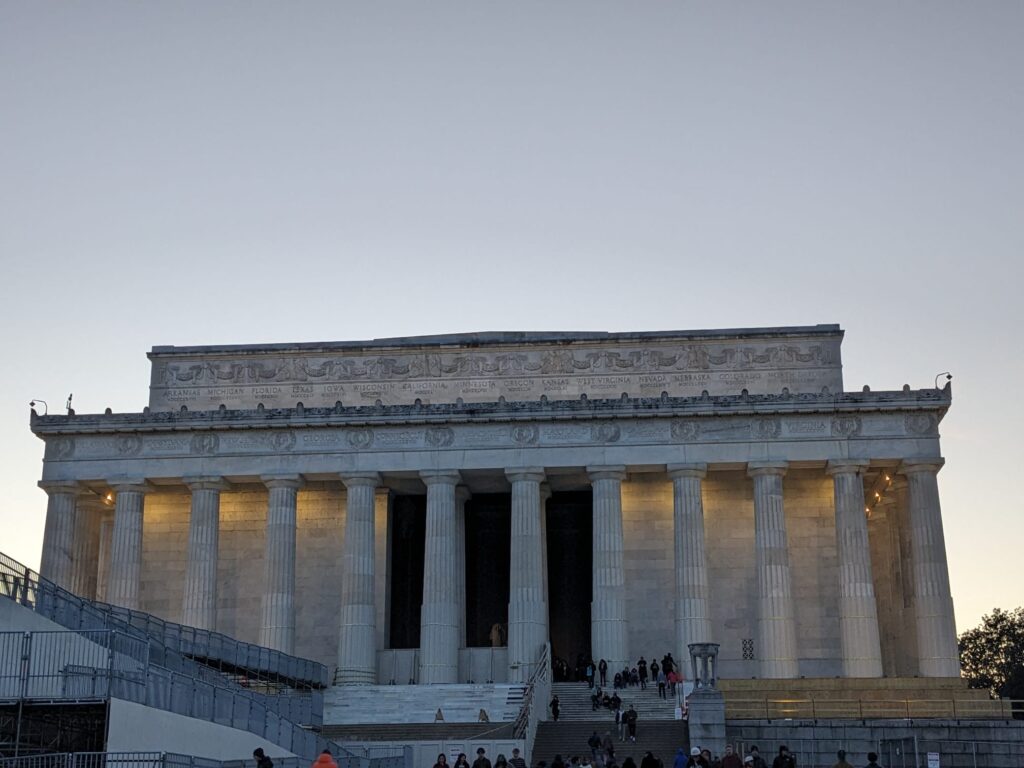
Henry Bacon’s architectural vision for the Lincoln Memorial was nothing short of awe-inspiring. The memorial’s neoclassical design, reminiscent of ancient Greek temples, harmonizes with the surrounding landscape to create an atmosphere of solemnity and reverence. The imposing grandeur of the memorial is not merely a physical manifestation but a deliberate representation of the ideals Lincoln championed – freedom, equality, and the preservation of the Union.
At the heart of the memorial, a seated Abraham Lincoln gazes contemplatively across the Reflecting Pool towards the Washington Monument and the U.S. Capitol. This carefully orchestrated alignment underscores the symbolic connection between the branches of government, emphasizing the enduring interplay between the executive, legislative, and the ideals of democracy.
The sheer scale of the Lincoln Memorial, with its Doric columns and imposing statue of Lincoln, fosters a sense of awe and respect. The design intentionally echoes classical architecture, creating an immersive experience that transports visitors to a space where time seems to stand still. The memorial’s setting, along the western end of the National Mall, establishes a contemplative sanctuary amidst the vibrant energy of the city.
Beyond its architectural magnificence, the Lincoln Memorial is a living testament to the principles of freedom and equality. It has been the backdrop for numerous historic events and gatherings, most notably Martin Luther King Jr.’s iconic “I Have a Dream” speech during the 1963 March on Washington for Jobs and Freedom. The memorial’s steps have borne witness to moments that resonate with the ongoing struggle for civil rights and justice, further enriching its significance in the tapestry of American history.
As visitors approach the Lincoln Memorial, they traverse a processional route flanked by trees and fluted columns, creating a deliberate sense of anticipation. The atmosphere within the memorial is one of contemplation and reflection, where individuals from all walks of life can connect with the principles that define the American experience.
In essence, the Lincoln Memorial transcends its role as an architectural masterpiece; it becomes a dynamic space where the spirit of democracy and the legacy of Abraham Lincoln converge. The memorial’s completion in 1922 ensured that the ideals of freedom, equality, and unity would forever be etched into the landscape of Washington, D.C., creating a lasting testament to the enduring principles that define the American journey.
Jefferson’s Memorial: Classical Beauty
Nestled along the tranquil shores of the Tidal Basin, the Jefferson Memorial, completed in 1943, emerges as a sublime embodiment of classical beauty and democratic principles. Designed by architect John Russell Pope, this architectural masterpiece pays homage to the author of the Declaration of Independence, Thomas Jefferson, while standing as a testament to the enduring ideals that form the bedrock of American democracy.
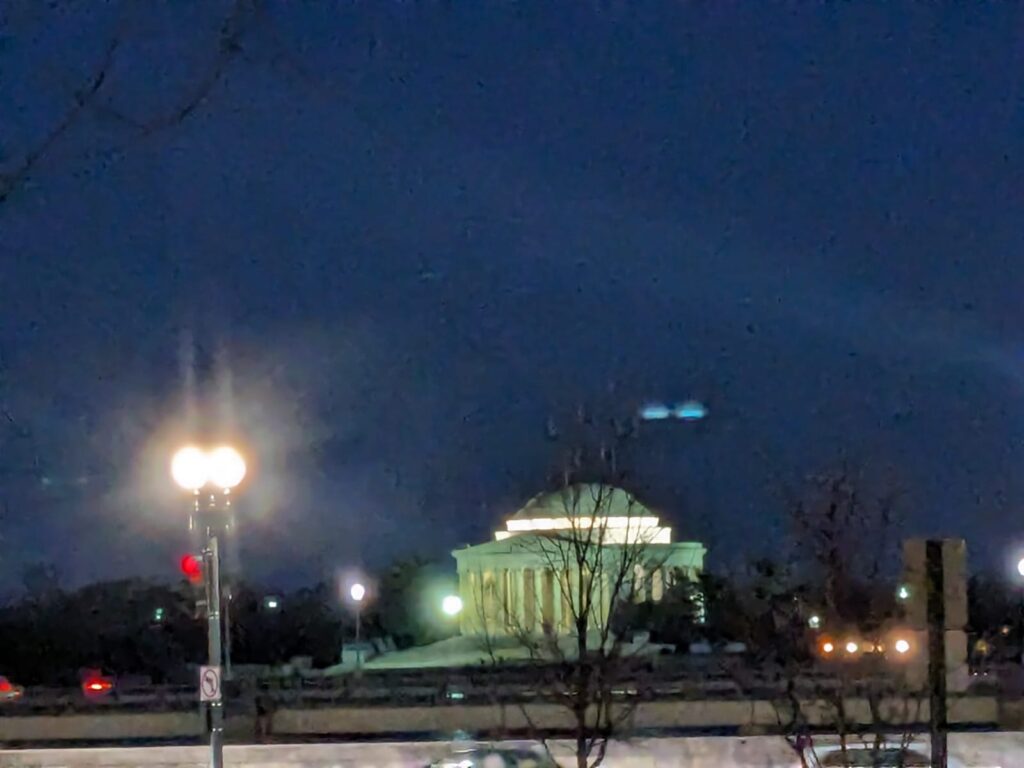
The design of the Jefferson Memorial draws inspiration from the timeless elegance of the Roman Pantheon, infusing the monument with a sense of grandeur and classical proportions. The memorial’s neoclassical architecture, characterized by its graceful columns and domed rotunda, transports visitors to an era where classical ideals merged seamlessly with the democratic spirit championed by Jefferson.
Situated on the edge of the Tidal Basin, the memorial’s strategic placement adds a reflective element to its symbolism. The serene waters mirror the columns and dome, creating a visual symmetry that enhances the monument’s classical beauty. As visitors approach the memorial, they traverse a processional route lined with cherry blossom trees, further enhancing the immersive experience of approaching a structure that pays tribute to one of America’s foremost founding fathers.
The focal point of the memorial is a bronze statue of Thomas Jefferson, seated contemplatively amidst the neoclassical surroundings. The statue captures the essence of Jefferson’s intellect and statesmanship, inviting visitors to reflect on the principles of liberty, equality, and the pursuit of happiness articulated in the Declaration of Independence.
Beyond its architectural splendor, the Jefferson Memorial serves as a hallowed space for contemplation and civic engagement. The words of Jefferson, etched into the interior walls, include excerpts from the Declaration of Independence, reinforcing the memorial’s role as a living testament to the democratic ideals that have shaped the nation.
The memorial’s completion during the tumultuous years of World War II adds a layer of historical significance. In the midst of global conflict, the Jefferson Memorial stood as a beacon of democracy, reminding Americans of the enduring principles that guided the nation’s journey.
As a part of the ensemble of monuments along the Tidal Basin, the Jefferson Memorial contributes to the visual and symbolic tapestry of Washington, D.C. Its classical beauty, reminiscent of ancient ideals, invites visitors to engage not only with the architectural grace of the structure but also with the democratic legacy it represents.
In essence, the Jefferson Memorial transcends its role as a physical structure; it becomes a space where classical beauty converges with the enduring principles of democracy. The completion of the memorial in 1943 ensured that Thomas Jefferson’s legacy and the ideals he championed would forever be enshrined along the shores of the Tidal Basin, creating a lasting testament to the classical beauty of American democracy.
Ideas and Inspiration: A Living Legacy
Washington, D.C., is more than just the capital of the United States; it stands as a living legacy, a testament to the enduring ideas and inspirations that have shaped the nation’s history and identity. Beyond its physical manifestation of democratic governance, the city is a dynamic canvas where each landmark embodies a unique facet of the American story, creating a tapestry of ideas and inspirations that resonate with visitors and locals alike.
As the construction of Washington, D.C., unfolded, it became a reflection of the ideals and principles that have guided the nation’s development. From the iconic U.S. Capitol, symbolizing the epicenter of legislative power, to the neoclassical beauty of the Jefferson Memorial, honoring the author of the Declaration of Independence, each landmark narrates a chapter of American history. The cityscape becomes a living testament to the democratic experiment, where the visionaries of the past laid the foundations for a nation that values liberty, equality, and the pursuit of happiness.
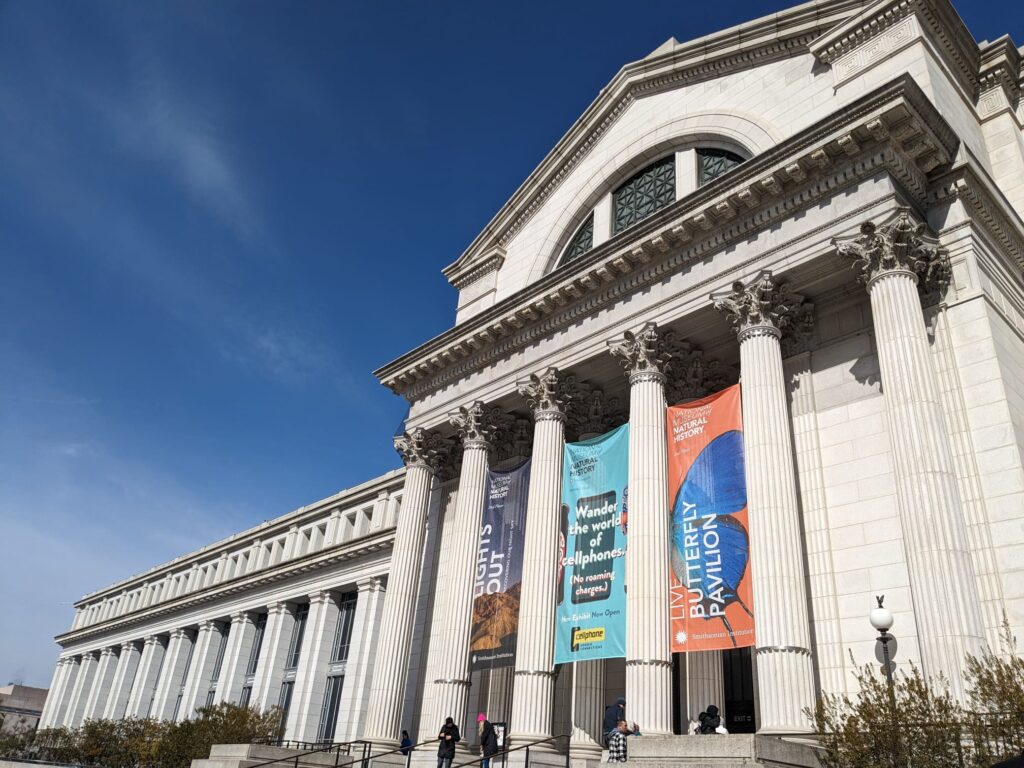
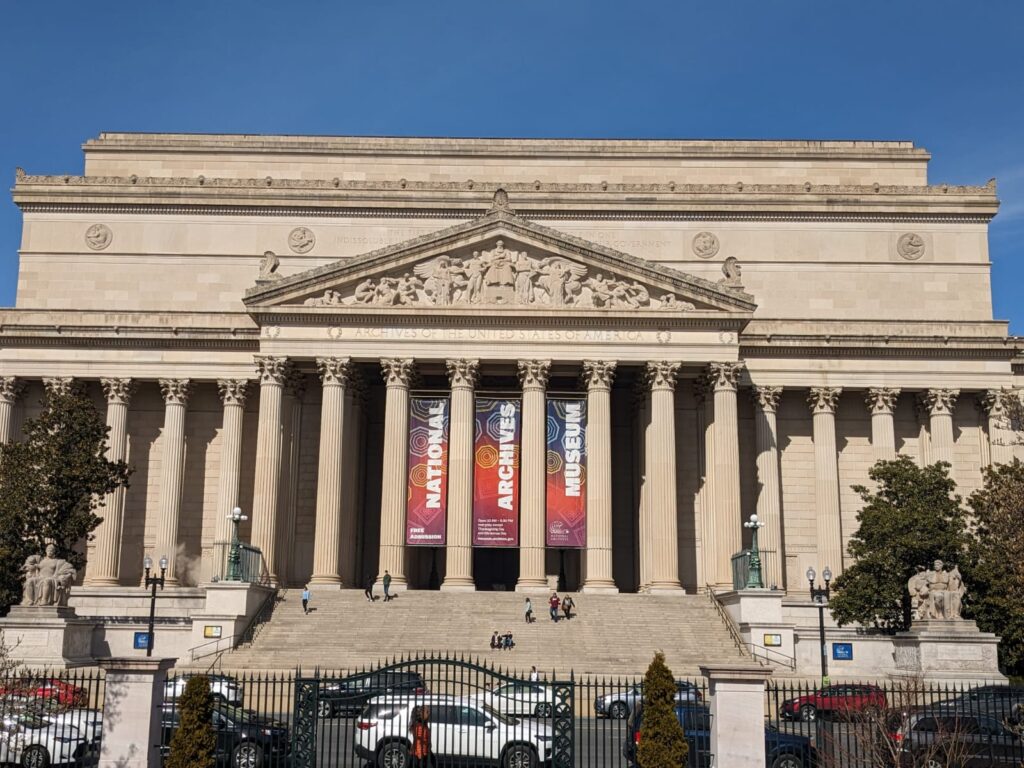
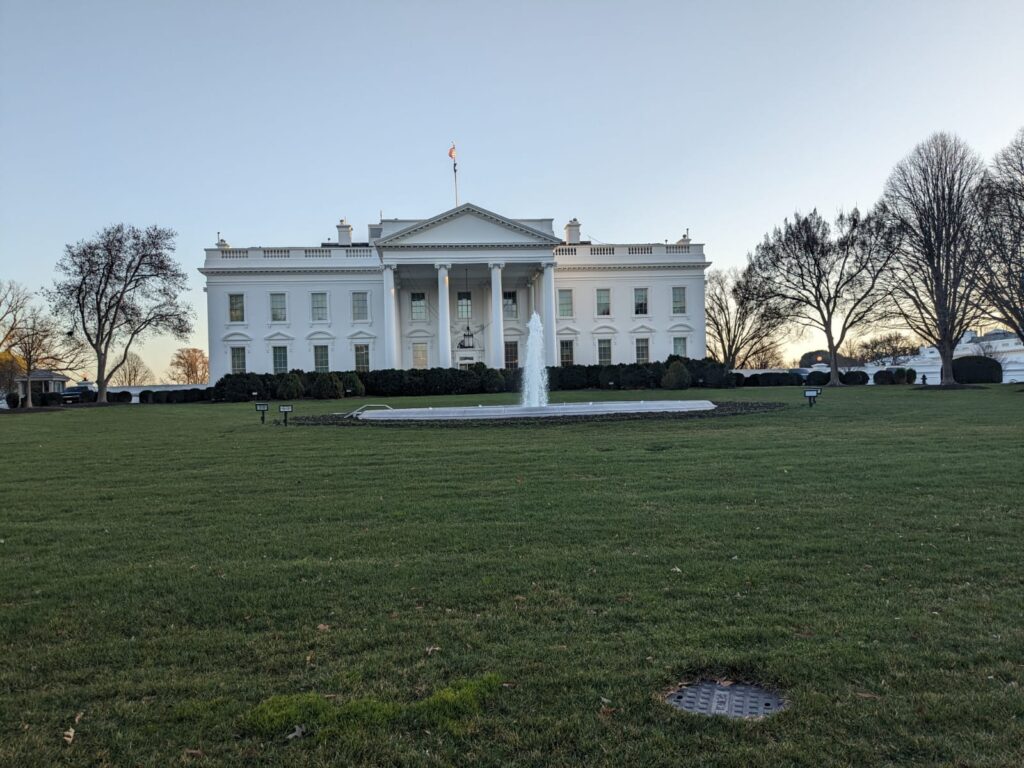
Beyond its historical landmarks, Washington, D.C., has evolved into a culinary haven, boasting some of the best Michelin-starred restaurants in the country. The city’s dining scene offers a delightful fusion of flavors, reflecting the diversity of the nation it represents. Iconic establishments near the National Mall provide not only delectable dishes but also an immersive experience where history and gastronomy converge.
The newly developed district called The Wharf stands out as a symbol of Washington, D.C.’s commitment to growth and modernity. This waterfront neighborhood, brimming with fine dining establishments and event venues, invites residents and visitors to indulge in the city’s culinary delights against a backdrop of scenic views. The Wharf becomes a vibrant hub where ideas of progress and innovation intersect with the pleasures of gastronomy.
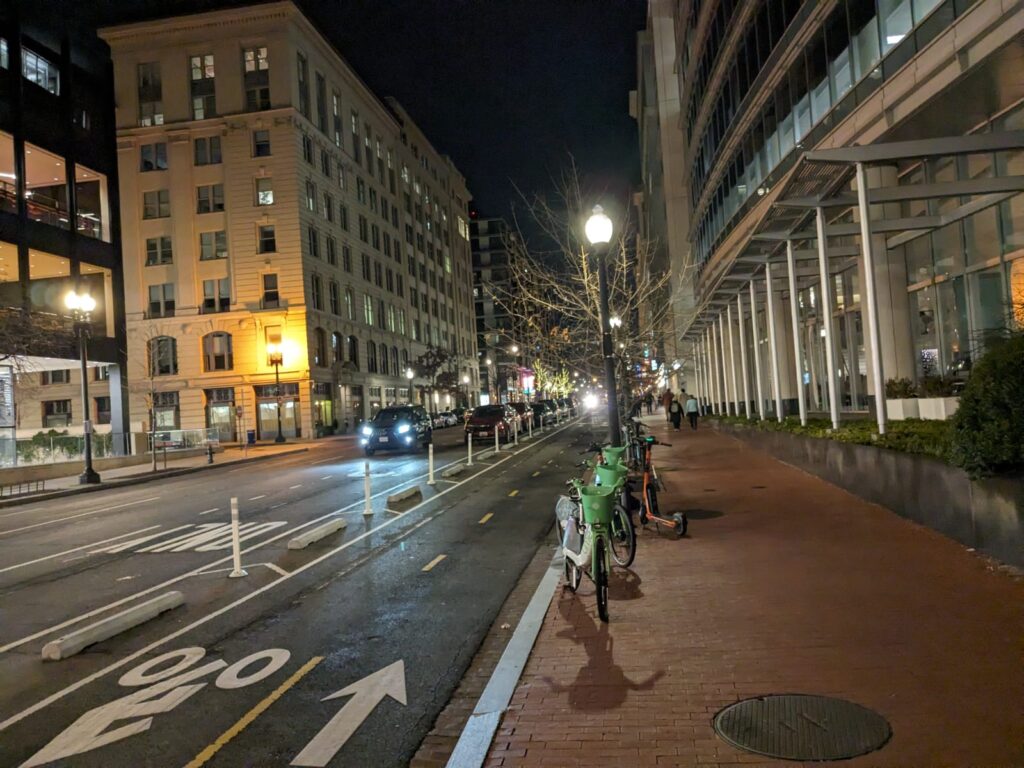
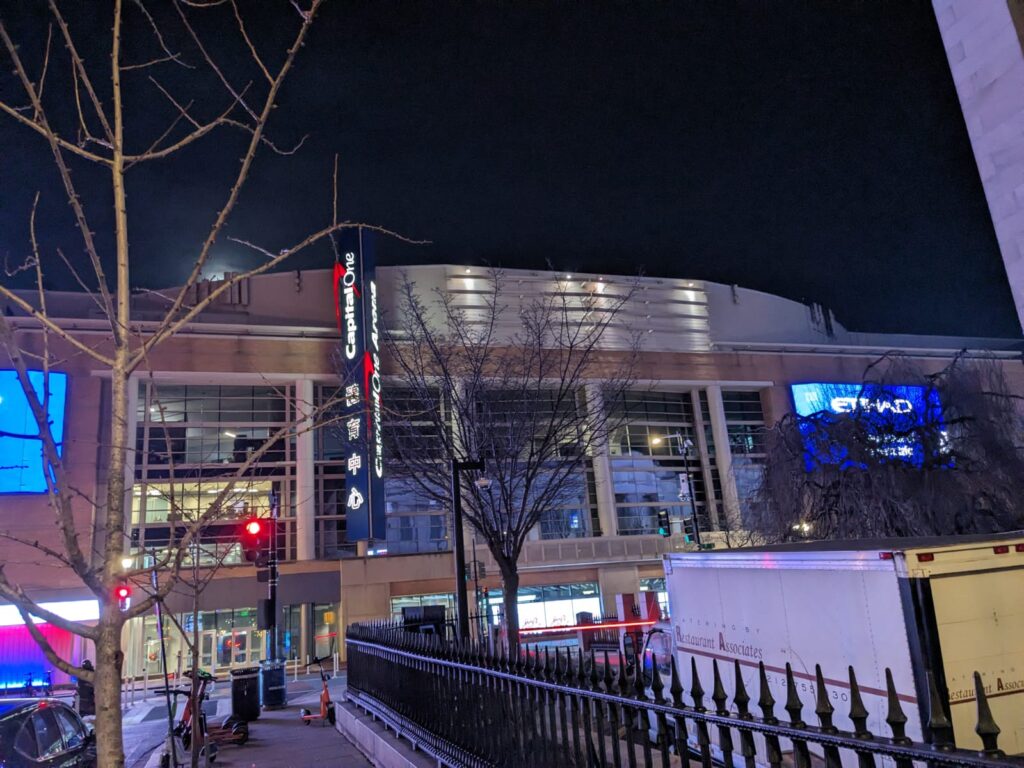
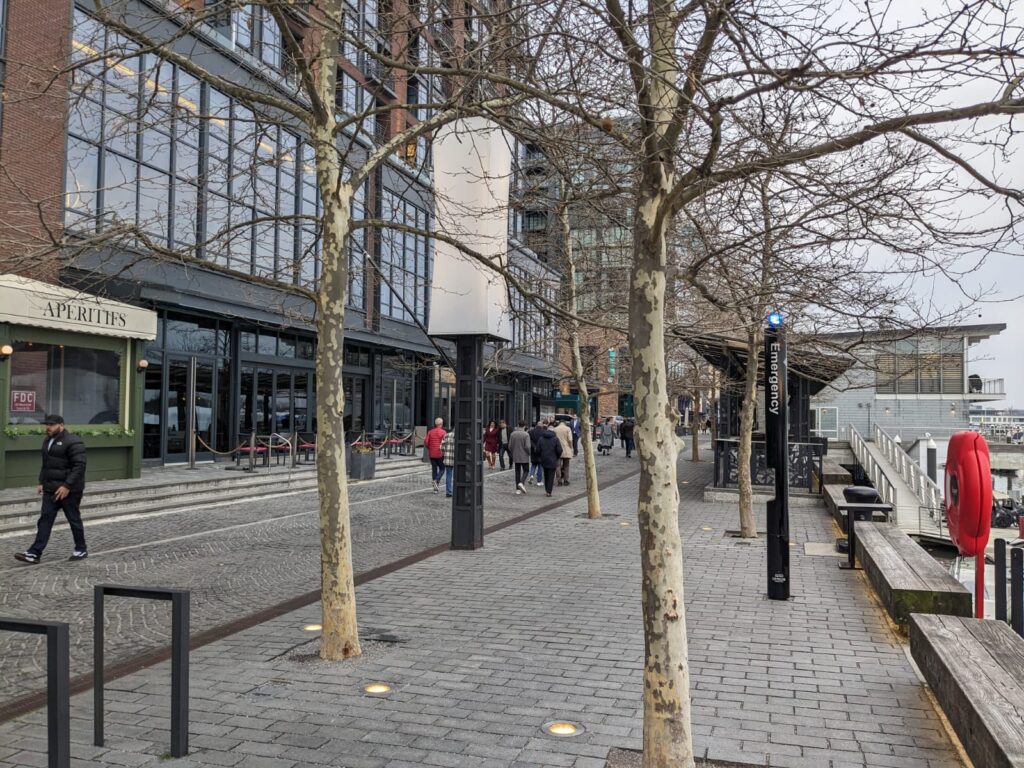

Venturing into Georgetown, one discovers a neighborhood that transcends its historical charm. This inviting area becomes a gathering place where locals hang out, dine, and enjoy the unique character of the cobbled streets. Georgetown complements the city’s rich history with a contemporary flair, creating an atmosphere that resonates with the diverse perspectives and ideas that define Washington, D.C.
In essence, Washington, D.C., is not just a destination for history enthusiasts; it is a multifaceted city that celebrates ideas, embraces inspirations, and offers a diverse array of experiences. The city’s living legacy extends beyond monuments and landmarks, reaching into its culinary excellence, dynamic neighborhoods like The Wharf and Georgetown, and the ever-evolving spirit that continues to shape the nation’s capital. It is a place where the past and present coalesce, inviting everyone to explore, savor, and be inspired by the vibrant legacy of ideas that permeate the heart of the United States.






